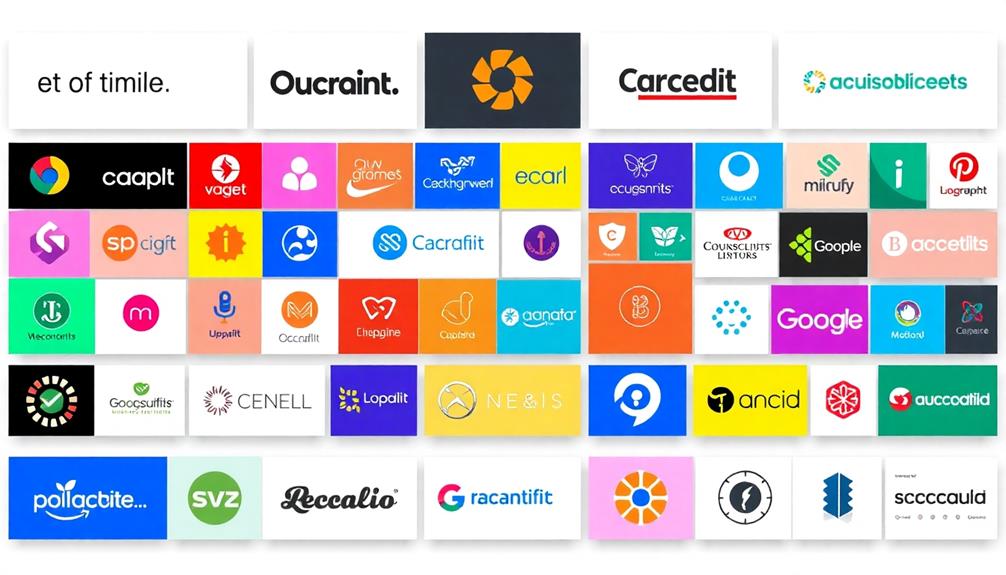To build a brand story that resonates with your audience, focus on creating strong emotional connections. Start by clarifying your core mission and values. Incorporate relatable characters and genuine experiences that reflect your audience's needs. Use the elements of plot, purpose, and people to craft a narrative that engages and inspires. Maintain authenticity and transparency to foster trust. Consistent messaging across your platforms reinforces brand identity and enhances recall. Remember, a compelling story not only differentiates your brand but also boosts loyalty. Keep exploring how to effectively engage your audience and nurture lasting relationships.
Key Takeaways
- Craft a narrative that incorporates the 4 Ps: Plot, Purpose, People, and Place to ensure authenticity and emotional connection.
- Focus on creating relatable stories that reflect your brand's values and mission, fostering trust and loyalty among your audience.
- Utilize customer feedback and insights to adapt and refine your storytelling, making it more relevant and engaging for your target audience.
- Maintain consistency across all communication channels to strengthen brand recognition and reinforce your core messaging.
- Evoke emotions like joy, empathy, and inspiration in your stories to enhance memorability and deepen connections with consumers.
Understanding Brand Storytelling

A brand story isn't just a narrative; it's the heartbeat of your brand. Understanding brand storytelling means recognizing that your story reflects your mission and values. It fosters familiarity and trust with your audience, making your brand feel more relatable.
By weaving together the 4 Ps of storytelling—Plot, Purpose, People, and Place—you create authentic brand storytelling that resonates deeply with consumers. Incorporating elements of mental clarity and health into your narrative can further enhance its impact.
Compelling brand stories do more than just capture attention; they forge emotional connections that can lead to lasting impressions. When your narrative genuinely reflects who you are, it differentiates you in saturated markets, allowing customers to recall your brand effortlessly.
This emotional resonance is essential, as it drives brand loyalty and boosts customer lifetime value.
Moreover, a clear and compelling brand story can greatly influence your market positioning. It helps customers understand how your brand can assist them in achieving their goals.
Importance of a Compelling Narrative

A compelling narrative creates strong emotional connections with your audience, making them feel valued and understood.
By sharing your brand story, you can also highlight your commitment to wellness tips that resonate with your values and mission.
In a crowded marketplace, memorable stories help your brand stand out, ensuring customers remember you when it matters most.
Emotional Connection Matters
Emotional connection matters more than ever in today's crowded market, where brands often compete for attention. When you weave a compelling brand story, you foster emotional connections that make your brand a relatable character in consumers' lives.
Research shows that customers who feel fully connected to brands are 52% more valuable than those who are merely satisfied. This highlights the importance of emotional engagement in driving customer loyalty. By developing emotional intelligence in your storytelling, you can enhance interpersonal relationships with your audience, which ultimately fosters deeper connections.
Authentic brand storytelling showcasing your values can greatly enhance this loyalty, as people naturally resonate with brands reflecting their beliefs and aspirations. Good stories create lasting impressions, making your brand more memorable and aiding recall in a saturated market.
By effectively leveraging emotional narratives, you don't just tell your audience who you are; you invite them to be part of your journey.
Moreover, emotional resonance in brand storytelling motivates audience engagement and participation, driving consumer action. When your audience feels an emotional connection, they're more likely to advocate for your brand, sharing their experiences with others.
Ultimately, a compelling brand story not only captures attention but also builds lasting relationships that are essential for sustained success.
Memorable Brand Differentiation
Crafting a memorable brand story sets you apart in today's competitive landscape. When you embrace brand storytelling, you create a compelling story that resonates with your audience, enhancing brand recall and loyalty.
Self-awareness enhances decision-making in branding, as understanding your audience's needs allows for more relatable narratives.
Here's why memorable brand differentiation is essential:
- Increased Recall: Brands that tell stories see a 55% increase in brand recall. This means consumers are more likely to remember you when it matters most.
- Personal Connection: With 92% of consumers preferring brands offering personalized experiences, unique storytelling allows you to build relatable narratives that engage your audience on a deeper level.
- Higher Loyalty: Emotionally connected customers are 52% more valuable. A compelling narrative fosters loyalty, ensuring customers return time and again.
Key Elements of a Brand Story

When crafting your brand story, focus on creating an emotional connection that resonates with your audience.
Incorporating elements of self-care routines can enhance the authenticity of your narrative, making it more relatable and engaging.
Authenticity and transparency not only build trust but also make your narrative more relatable.
Emotional Connection Importance
How can a brand truly connect with its audience? The answer lies in establishing emotional connections through brand storytelling. When you craft authentic narratives that resonate, you create a bond that goes beyond just products.
In fact, engaged customers are 52% more valuable than those who are merely satisfied. For instance, just as Jennifer Aniston and Brad Pitt maintain a friendly post-divorce connection, brands can foster lasting relationships with their audience through genuine storytelling.
To foster these connections, consider the following key elements:
- Plot: Develop a fascinating story that captures attention and highlights your brand's journey.
- Purpose: Clearly define what your brand stands for and how it aims to make a difference in the lives of your audience.
- People: Showcase relatable characters or real customers who embody your brand values, inviting empathy and trust.
When you weave these elements into your storytelling, you evoke feelings of joy, empathy, or inspiration. This not only enhances brand recall but also encourages audience participation.
Authenticity and Transparency
Emphasizing authenticity and transparency can greatly enhance your brand story, creating deeper connections with your audience. When you share genuine experiences, you build trust and emotional connections that resonate powerfully. Did you know that 52% of fully connected customers are more valuable than those simply satisfied?
By being transparent about your struggles and successes, you make your brand narrative relatable. This honesty fosters loyalty and encourages customers to feel part of your journey.
Here's a quick look at how authenticity and transparency can transform your brand story:
| Element | Impact |
|---|---|
| Authenticity | Fosters trust and emotional connections |
| Transparency | Enhances relatability and loyalty |
| Real Experiences | Aligns brand narrative with customer needs |
| Consistent Identity | Clarifies purpose and values |
When your storytelling reflects real experiences and values, it doesn't just impact customer perceptions; it builds a loyal community around your brand. By focusing on these key elements, you guarantee that your audience truly understands and connects with your brand's mission.
Memorable Narrative Techniques
A strong brand story goes beyond mere authenticity and transparency; it incorporates memorable narrative techniques that captivate and engage your audience.
To create a compelling narrative, focus on these key elements:
- Plot: Every great story has a clear plot that outlines the journey. Define the challenges your brand and customers face and how you help them navigate those obstacles. This journey can be enhanced by incorporating elements of music therapy integration that resonate emotionally with your audience.
- Purpose: What drives your brand? Your purpose should resonate emotionally with your audience. When they connect with your brand's mission, it fosters loyalty and trust. Engaging narratives often incorporate elements that promote mindfulness and presence, similar to the benefits found in music-making.
- People: Position your customers as the heroes of the story. By showcasing their journeys and triumphs, you create a relatable narrative that enhances engagement.
Incorporating emotional resonance is essential. Aim to evoke feelings like joy, empathy, or inspiration, as these emotions forge lasting connections with consumers.
Don't forget to utilize conflict and resolution techniques, making your brand's story memorable and relatable. When you weave these narrative techniques into your brand story, you'll create a compelling narrative that resonates, engages, and retains your audience's loyalty.
Tips for Effective Storytelling

Great storytelling can elevate your brand and create a lasting impact. To start, brand storytelling requires you to identify your "why." This core mission and value statement forms an authentic foundation that forges connections with your audience.
Additionally, understanding how to communicate effectively during challenging times, such as breakups, can enhance your storytelling approach by maintaining dignity and clarity in your message, much like the importance of clear communication during a breakup the classy way to explain a breakup.
Next, employ narrative techniques like character development, conflict, and resolution. These elements help you craft compelling stories that resonate emotionally, keeping your audience engaged.
Don't forget to incorporate customer feedback into your storytelling process. By leveraging insights from social media, you can uncover sentiments and trends, making your narratives more relatable and relevant.
Consistency is key, too; maintain a unified brand narrative across all communication channels. This reinforces your message and strengthens audience recognition and loyalty.
Real-World Brand Story Examples

Numerous brands have successfully harnessed the power of storytelling to create strong connections with their audiences.
These brand stories that resonate not only enhance customer experience but also strengthen their social media presence.
By leveraging insights from horoscope predictions and understanding their audience's desires, brands can curate narratives that align with their customers' values and aspirations.
Here are three compelling examples:
1. Nike's "Just Do It": This storytelling strategy emphasizes resilience, featuring athletes like Colin Kaepernick to ignite discussions around social justice.
It's a powerful narrative that aligns with audience sentiments, driving an impressive $5.1 billion in revenue.
2. Apple's "Think Different": By portraying innovation and creativity, Apple connects deeply with tech-savvy consumers.
This campaign positions Apple as a challenger of the status quo, reinforcing its identity as a leader in technology.
3. Coca-Cola's "Open Happiness": The "Share a Coke" initiative personalizes experiences and fosters joy and togetherness, considerably boosting brand loyalty.
This storytelling approach not only resonates with customers but also enhances recall.
Building Your Brand Identity

Building a strong brand identity involves clearly articulating your company's values, mission, and vision while resonating with your audience's aspirations and challenges.
Start by understanding your target audience through detailed buyer personas. This understanding helps you tailor your brand identity to meet their specific needs and desires.
To enhance your online presence and brand perception, consider incorporating advanced strategies used by top online reputation companies that specialize in managing brand stories effectively.
Authenticity plays an essential role in crafting your brand identity. Align your narrative with genuine experiences to foster trust and emotional connections.
When your story reflects real-life values and beliefs, your audience can see themselves in your brand, enhancing their loyalty.
Consistency is key when communicating your brand identity. Make sure that your messaging is uniform across all platforms, which reinforces your identity and makes it recognizable in a crowded market.
Brands like TOMS and Nike exemplify how a well-defined identity centered around social missions or empowerment can greatly boost customer loyalty and engagement.
Engaging Your Audience Effectively

To truly connect with your audience, you need to understand their values and needs. This understanding allows you to craft narratives that resonate on a personal level, fostering emotional connections.
Emotional storytelling techniques can greatly enhance audience engagement, making your brand more memorable and relatable.
Here are three effective strategies to engage your audience:
- Utilize Multimedia: Incorporate videos and infographics that cater to diverse preferences. This not only boosts engagement but also enhances your storytelling effectiveness.
- Monitor Feedback: Use social listening tools to track consumer sentiments and adapt your narratives in real-time. This guarantees your stories remain relevant and aligned with your audience's expectations.
- Enhance Brand Identity: Consistently reflect your brand's values across all platforms. A cohesive narrative reinforces your brand identity, making it easier for your audience to connect with you.
Consistency in Brand Messaging

Consistency in brand messaging is essential for establishing a strong connection with your audience. When your communications align with your brand's core values and mission, you foster trust and recognition. This cohesion increases brand recall by 23%, making your brand more memorable to consumers. By maintaining consistency in brand messaging, you're not just telling a story; you're building a robust brand identity.
Moreover, a clear and consistent identity enhances customer loyalty. Brands that uphold this standard are 3-4 times more likely to see loyal customers. Consistency breeds familiarity, and audiences respond better to coherent narratives. In fact, effective alignment of your messaging across all platforms can boost customer engagement by up to 60%.
To maintain this consistency, it's vital to regularly monitor feedback and audience sentiment. Understanding how your audience perceives your brand allows you to adapt your narrative while staying true to your core identity.
Monitoring and Adapting Your Story
As you engage with your audience, monitoring their feedback becomes crucial for refining your brand story. By actively listening to customer data and audience feedback, you can adapt your narrative to better resonate with your target demographic.
Here are three key strategies to contemplate:
- Social Media Insights: Regularly check comments and mentions on social media. These insights reveal customer sentiments and preferences that can highlight areas for improvement in your brand story.
- Social Listening Tools: Utilize tools that detect untagged mentions of your brand. Understanding how your narrative is perceived in unfiltered conversations allows for timely adjustments to your messaging.
- Feedback Loop: Create a system that encourages customer insights. By inviting feedback, you can refine your story based on real-world reactions, ensuring it aligns with audience expectations.
Consistency in messaging across all platforms is crucial. While adapting your brand story, make sure it remains cohesive and reflective of your core values.
Frequently Asked Questions
How to Create a Brand That Resonates With Your Audience?
To create a brand that resonates with your audience, identify your core values, understand their pain points, and share authentic stories. Use engaging multimedia to connect deeply and foster lasting relationships with your customers.
How Do You Create Content That Resonates With Your Audience?
Creating content that resonates with your audience's heart is like crafting a warm hug. You've gotta know their needs, tell relatable stories, and engage authentically—this way, you'll build trust and connection effortlessly.
What Are the 4 Keys to Remarkable Brand Storytelling?
You'll find the four keys to remarkable brand storytelling are Plot, Purpose, People, and Place. Emphasizing these elements helps you craft engaging narratives that connect deeply with your audience and create lasting impressions.
How to Build a Brand Storytelling?
To build effective brand storytelling, start by knowing your audience's needs and desires. Define your brand identity, weave engaging narratives, share authentic experiences, and use multimedia to make your message memorable and relatable.
Conclusion
In crafting your brand story, remember that 92% of consumers want brands to make ads that feel like a story. This statistic highlights the power of storytelling in connecting with your audience. By weaving a compelling narrative, you not only engage your customers but also foster loyalty and trust. So, embrace the art of storytelling, stay consistent, and adapt as needed to guarantee your brand resonates deeply with those you aim to serve.










